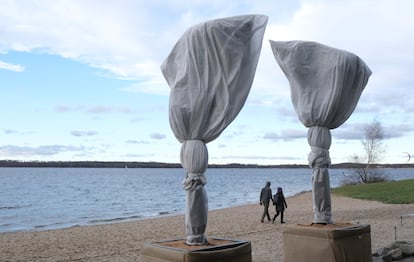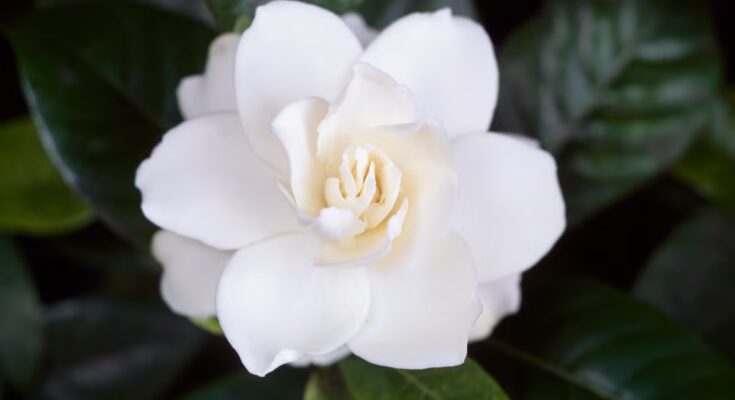Winter is already upon us and the thermometers are dropping in these weeks of November. When growing plants, there is a big difference between growing them in a cold region or a warmer one. Those who live in the municipality of El Pinar, on the island of El Hierro, will never have the need to shelter a precious coleus (Coleus scutellarioides) of a possible freezing night, for the simple reason of the good climate, with temperatures approaching those of a sweet spring. But another song is heard in Santa Eulalia del Río Negro, in Zamora, where in a single freezing night the cells of many non-native plants will freeze irremediably, their membranes pierced by sharp ice crystals, like plant harakiri.
With this wide temperature range, every person who carefully takes care of their plants knows how far they can go and will have chosen those that resist well to the conditions that the climate of their region imposes on them. The dilemma of whether a species can withstand the winter is a constant, and how many gardeners have not tested, fingers crossed, whether any of their plants could survive outdoors. The peculiarities of each site mark minimal differences which, for a plant, can be the margin between life and death. In many cases, if a terrace faces west or south, rather than north, it will ensure that cultivated plants that are a bit on the edge, due to the need for milder temperatures, remain alive and do not necrotize their tissues.
In the 1960s, the United States Department of Agriculture (USDA) divided the country into different cold hardiness zones for plants, depending on the average minimum temperatures reached in each location. Thus, this system currently has 13 zones, from number 1 to 13. Zone 1 is the one where the thermometer drops the most, with temperatures below -51.1 °C, while zone 13 hosts geographical areas where the average minimum temperature is above 18.3 °C. In this way it is demarcated in which areas a certain species can grow without risk of death.
This system has proven so useful that it has been accepted in many other countries, including European ones, although it is not the only method, as the Royal Horticultural Society has its own zone scale for the UK.
Much of peninsular Spain is home to USDA zones 8 and 9, which have average annual minimum temperatures of between -12.2°C and -1.1°C. On the other hand, the coasts of the Iberian Peninsula, as well as the Balearic Islands and the Canary Islands, enjoy warmer USDA hardiness zones, between -1.1°C and 10°C, which correspond to zones 10 and 11.
These zones are supplemented by essential information on which USDA hardiness zones each species can inhabit. For example, in Spain, a gardenia (Gardenia jasminoides) can develop in zones 10 and 11, where winters do not fall below -1.1 °C; a fig tree (Ficus carica) grows wonderfully between zones 8 and 11, but not in zone 7, which is what we find in places linked to mountainous areas.
More and more cultivation pages add this information on cold hardiness; Likewise, tables with hundreds and hundreds of species can also be downloaded on the Internet. In some, you will even see that each zone number is in turn divided into two letters —1a, 1b, 2a, 2b…—, which allow you to delimit the geography with greater precision, further specifying the temperature each plant can withstand.
Like any generalization, it is imperfect, since the cold hardiness of any plant depends on numerous factors. To give an example, a plant that grows in a more clayey garden soil – and which, consequently, retains more water – will be more sensitive to the cold than if that same species grows in a soil with a greater volume of sand and, therefore, with less water retention thanks to better drainage. Likewise, if the aforementioned gardenia grows against a wall that blocks freezing winds, and is sheltered under a porch, it is possible that it can tolerate a lower temperature than that marked by these USDA zones.

Another factor to take into consideration is the acclimatization of the species to the place of cultivation. For this reason it is very convenient to acquire the specimen between the beginning of spring and the end of summer, so that it has more than enough time to experience the progressive lowering of autumn temperatures, when it is a species that may be somewhat compromised in the area in which it will develop. This adaptation will make the difference whether a plant survives the winter or dies at its feet.
Finally, for the coldest plants destined to remain outdoors all year round, there is help: thermal blankets. White in color and made of porous material, these synthetic fabrics serve to completely envelop the plant to soften the frost. When the plant is very sensitive or the polar nights arrive, more than one textile layer is applied to offer greater protection to the plant.
Dangerous weeks are coming for plants from other latitudes that are cared for outdoors. But, if everything is done correctly, a new spring will be born for them.



